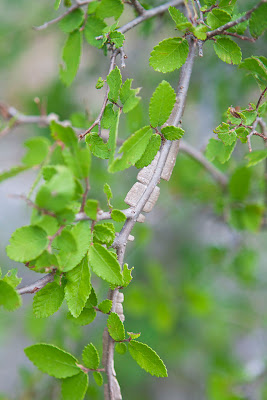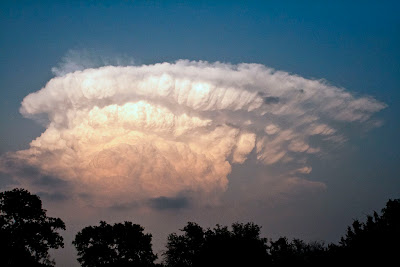Even though we're in a dry period right now there is quite a bit of moisture in the atmosphere. The problem is that it's not falling to the ground!
One of the characteristics of rain in this part of the country is that it's usually scattered and very localized. I might drive through a heavy rainstorm on the way home from work and yet the house got nothing. I reported 3.3 inches of rain at our house for May to our chapter's
Rainfall Monitoring Project and a fellow Master Naturalist told me they only received 0.6 inches.
Another characteristic is that because of ground heating during the day, by late afternoon we see the most beautiful, and sometimes, threatening cloud formations. The ground heating causes strong updrafts and as the air's moisture rises and cools, it condenses to form clouds.
Here's a photo of a cloud that I captured in late April. It didn't come over our house - it was moving north if I remember correctly and was east of us.
It's an example of a
cumulonimbus cloud formation. They are the largest cloud formations and can form alone or in clusters. They start at a low altitude, typically about 5,000 feet and soar up to 15,000 to 20,000 feet or more. This one has a red tinge along the bottom because of the low, setting sun.
I was disappointed when we didn't get any rain that day. In fact, we only got 0.1 inches in April and that was almost two weeks before this was taken. My attitude toward rain has definitely changed over the years. I used to think that rain ruined the day or weekend. Now I look forward to it and am happy when we get a good drenching. I'd rather see rain spread over several days than getting it all in one burst like we sometimes do, but I'm glad to get it in any form.











